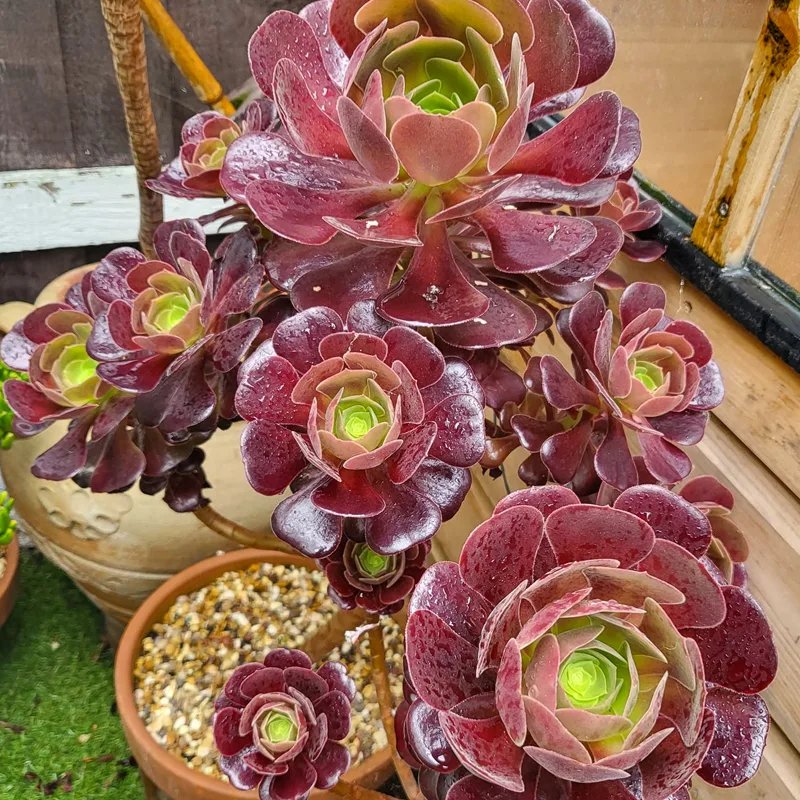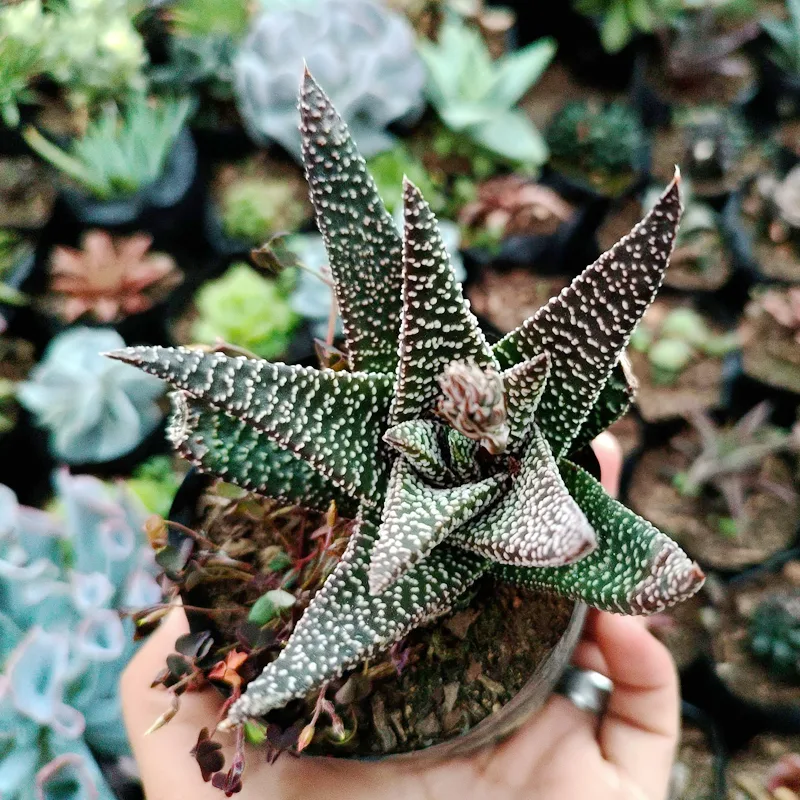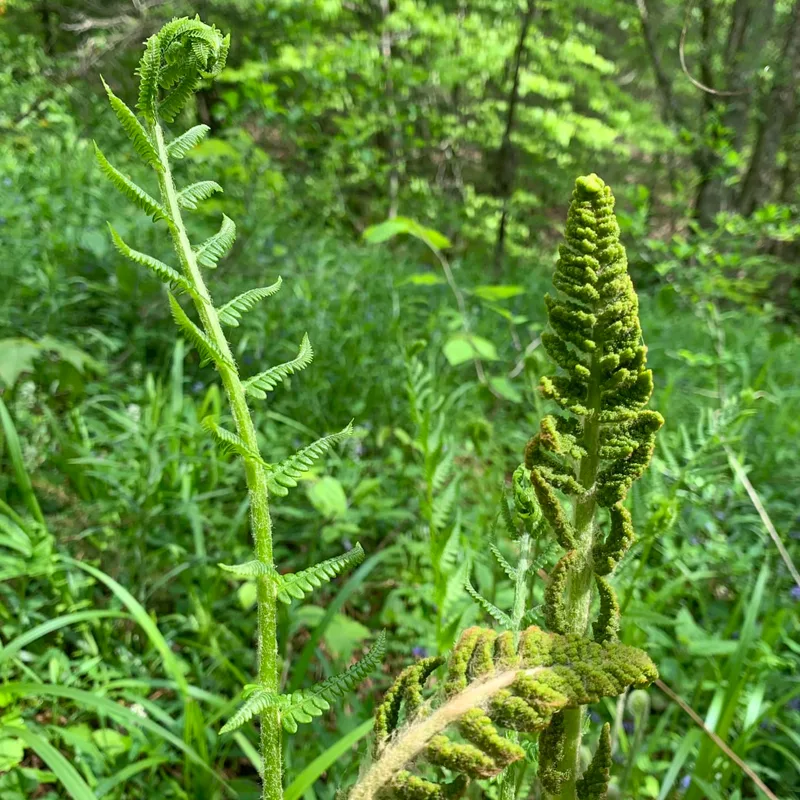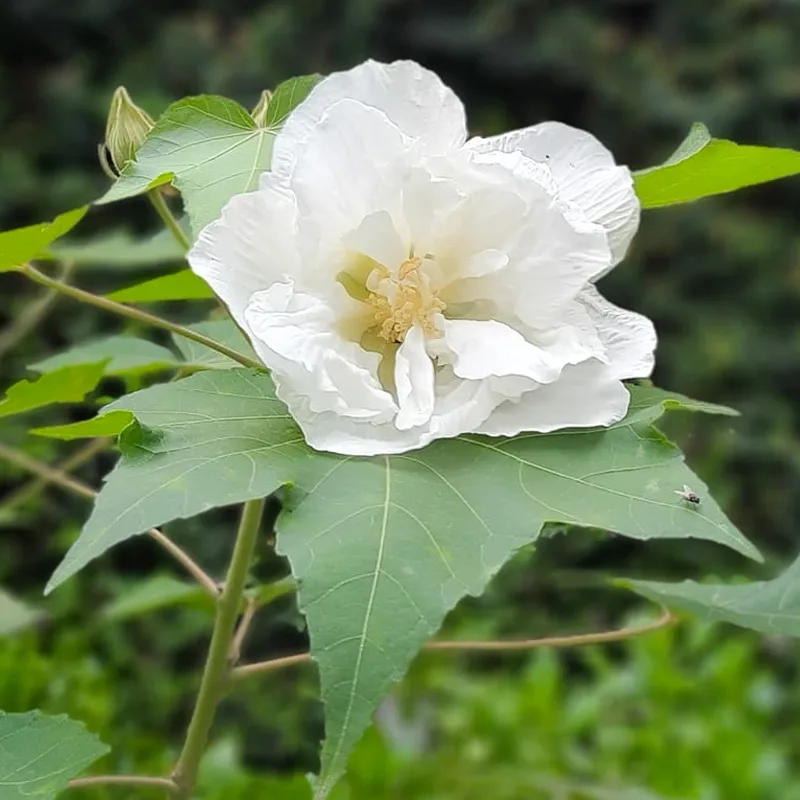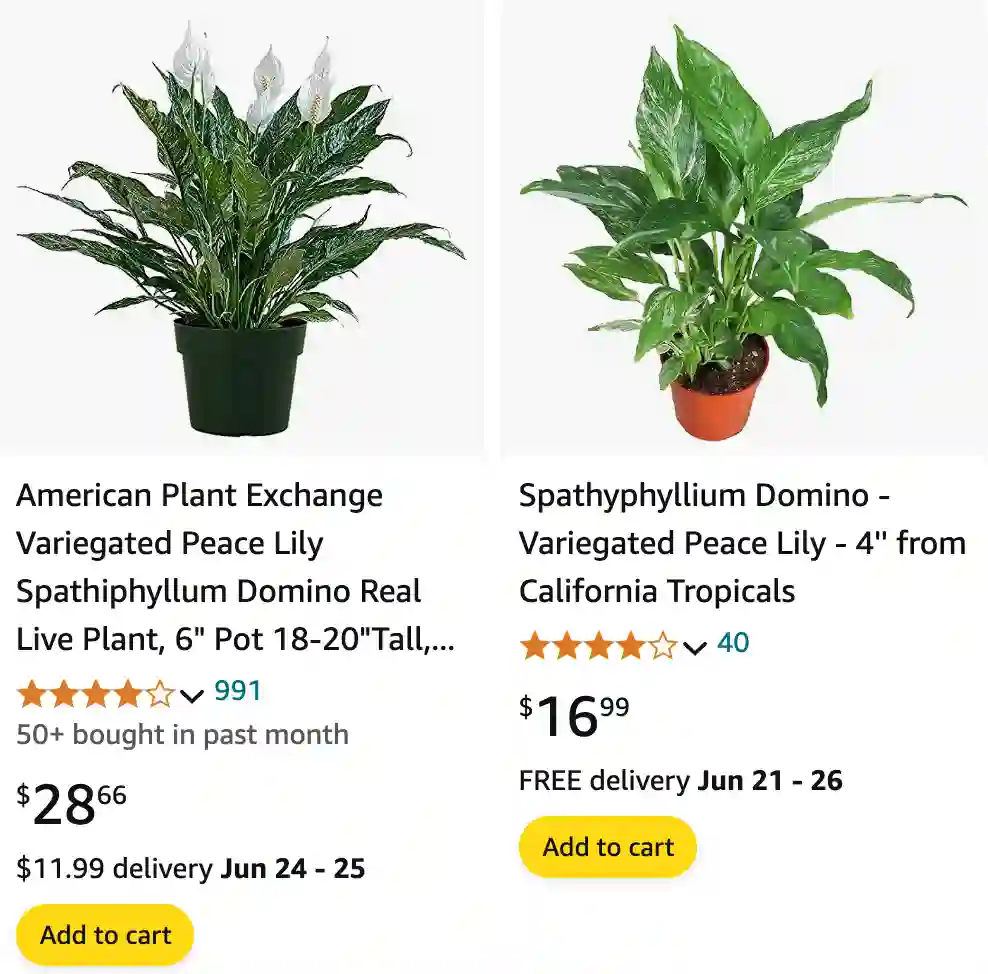
The Spathiphyllum Domino: My Guide to This Elegant Peace Lily
Hi, Ferb Vu here! As a houseplant enthusiast, I’ve fallen head over heels for the Spathiphyllum Domino, also known as the Domino Peace Lily. This beauty boasts stunning variegated foliage and the classic peace lily charm. But fear not, fellow plant lovers, caring for this leafy wonder is easier than you might think.
In this guide, I’ll answer all your burning questions about the Spathiphyllum Domino, from light and watering needs to common issues and propagation tips.
59 Species in Genus Spathiphyllum
How to care for Spathiphyllum Domino?
Light: Brightening Up Your Domino’s Day
Unlike its peace lily cousins, the Domino thrives in brighter, indirect light. Think dappled sunlight filtering through a sheer curtain. Direct sun can scorch the leaves, so avoid south-facing windows. North-facing windows might be a bit too dim, but with some extra TLC (like occasional fertilizer), it can survive.
Key takeaway: Bright, indirect light is your Domino’s happy place.
Watering: Finding the Golden Ratio
The Domino prefers consistent moisture, but not soggy soil. Here’s my trick: stick your finger about an inch into the potting mix. If it feels dry, it’s watering time. Aim for a thorough soak until water runs out the drainage holes. Discard the excess water to prevent root rot.
Pro tip: When in doubt, underwater rather than overwater. A wilting Domino perks up quickly with a good drink, but soggy roots are a recipe for disaster.
Humidity: Keeping Your Domino Hydrated (from the Air)
Peace lilies, including the Domino, love humidity. If your home is on the dry side, consider these options:
- Group plants together: Plants naturally increase humidity around them.
- Pebble tray trick: Place your pot on a tray filled with pebbles and water. The water evaporates, creating a mini-humidifier.
- Misting: Occasionally mist the leaves with filtered or room-temperature water.
Remember: Don’t overdo the misting, as it can encourage fungal diseases.
Fertilizer: Giving Your Domino a Boost
During the growing season (spring and summer), a light feeding every 4-6 weeks with a balanced fertilizer diluted to half strength is all your Domino needs. In the fall and winter, hold off on fertilizing, as the plant goes dormant.
Common Issues and How to Save the Day
Brown leaves: This could be a sign of underwatering, sunburn, or old age. Simply remove the brown leaves and adjust your watering or light conditions.
Yellowing leaves: Similar to brown leaves, yellowing can indicate overwatering, lack of light, or nutrient deficiency. Check the soil moisture and light levels. If underwatering isn’t the culprit, consider a weak fertilizer solution.
Drooping leaves: This usually screams underwatering. Give your Domino a good drink and it should perk up within hours.
Can My Pets Be Friends with My Domino?
Unfortunately, the Spathiphyllum Domino, like other peace lilies, is toxic to cats, dogs, and curious children. The plant contains calcium oxalate crystals, which can cause mouth irritation, vomiting, and diarrhea if ingested.
Safety first: Keep your Domino out of reach of pets and young children.
Propagating Your Domino: Sharing the Peace Lily Love
The Domino can be propagated by division. Here’s a simplified version:
- Gently remove your Domino from its pot during spring or summer.
- Look for natural divisions in the root system.
- Using a sterilized knife, separate the sections, ensuring each division has healthy roots and leaves.
- Repot each division in a well-draining potting mix suitable for peace lilies.
- Water thoroughly and provide bright, indirect light.
Be patient: It might take a few weeks for your new Domino propagations to establish themselves.
Domino vs. Regular Peace Lily: Picking Your Perfect Peace
Both the Domino and the regular peace lily (Spathiphyllum Wallisii) are beautiful, air-purifying plants. Here’s a quick breakdown to help you decide:
- Light: Domino prefers brighter indirect light, while the regular peace lily tolerates lower light conditions.
- Foliage: Domino boasts variegated leaves, while the regular peace lily has solid green foliage.
- Growth rate: Domino might grow a tad slower than the regular peace lily.
The choice is yours: If you love variegated plants and can offer brighter light, the Domino is a great pick. If you prefer a classic peace lily for low-light areas, the regular peace lily won’t disappoint.
Spathiphyllum Domino vs Diamond
I find the variegation on my Spathiphyllum Domino more striking and consistent, while my Spathiphyllum Diamond seems to have a more subtle and random pattern that feels unique every time I look at it.
Conclusion: The Domino Effect on Your Home
The Spathiphyllum Domino is a stunning and relatively low-maintenance houseplant. With the right amount of light, water, and a touch of TLC, this elegant peace lily will reward you with beautiful variegated foliage and its signature white blooms. It also boasts air-purifying properties, adding a touch of nature’s serenity to your home. So, if you’re looking for a houseplant that brings both beauty and functionality, the Domino might just be the perfect addition to your plant family.
Here are some additional thoughts:
- Don’t be afraid to experiment: While I’ve shared some general guidelines, every plant is unique. Observe your Domino and adjust your care routine as needed.
- Join the plant community: There are online forums and social media groups dedicated to houseplants. Join the conversation to learn from other Domino enthusiasts and share your plant parenting journey.
- Enjoy the journey! Caring for plants is a rewarding experience. Take joy in watching your Domino thrive and bring a touch of life to your living space.
With a little effort, you can ensure your Spathiphyllum Domino thrives for years to come. Happy planting!
If i die, water my plants!
